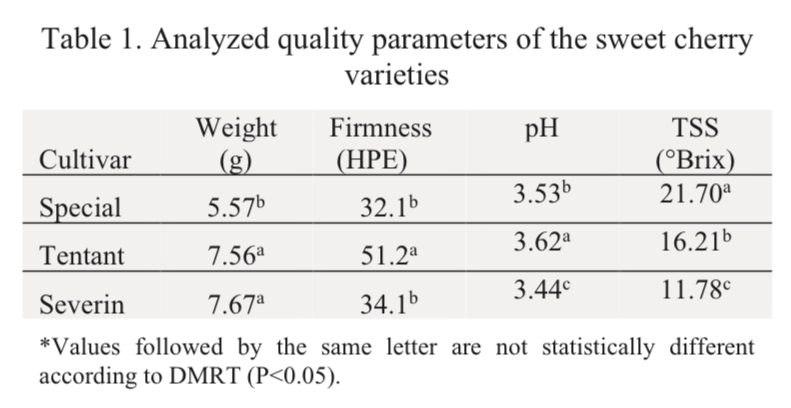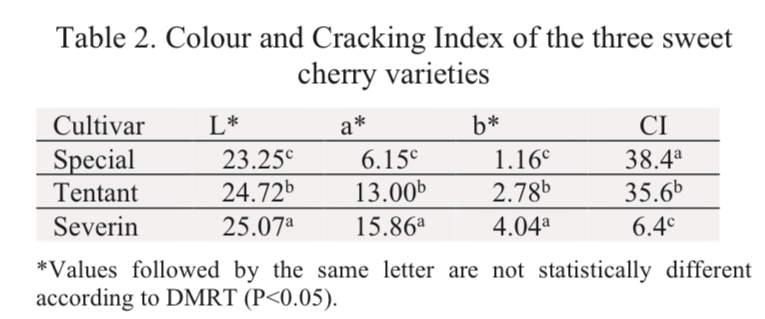Fruit quality and cracking
One of the new research topics is trying to find correlations between fruit quality and their susceptibility to cracking. Researchers from the University of Agronomic Sciences and Veterinary Medicine of Bucharest and the Research Institute for Fruit Growing of Pitești-Mărăcineni (Romania) have assessed the qualitative parameters of three sweet cherry cultivars by measuring parameters such as weight, pulp firmness, pH, total soluble solids, and color.
Additionally, the cracking index was used to quantitatively evaluate the cultivars ‘Special’, ‘Tentant’, and ‘Severin’ grafted onto the rootstock IP-C8. The first observation to be made is that fruit quality is closely related to the cultivar and the specific environmental conditions of the year in question.

In particular, they are significantly influenced by the presence of excessive precipitation before or during the harvesting process. For this study, the researchers decided to consider varieties with an identical or very similar harvest period during the experiment to ensure an objective evaluation.
Experimental conditions and results
In 2023, the year of the study, the harvest for the 'Tentant' and 'Special' varieties was on June 12, while the 'Severin' variety was harvested two days later, on June 14. Despite the 7.2 mm of precipitation occurring near harvest time, the fruits were not damaged. Based on the data recorded for each variety in terms of fruit weight, ‘Severin’ had the largest fruits (7.67 g), followed by ‘Tentant’ (7.56 g), with no statistical differences.

Although the firmness values for the 'Special' and 'Severin' varieties were comparable, their behavior drastically diverged after the fruits were immersed in water for six hours. The cracking index was positively correlated with the increase in pH under the specific experimental conditions.
Fruit composition and color
The spectrum of values for total soluble solids ranged from 11.78 °Brix in 'Severin' to 21.7 °Brix in 'Special', and the correlation between this parameter and the cracking index was positive, although the differences between the varieties were statistically confirmed for both parameters.

Examining the three color coordinates of the fruit's skin, the researchers observed that the bright red color of 'Severin' was the lightest, in contrast to the darker skin of the 'Special' variety. In this case, the correlation between skin color and cracking index was negative.
Conclusions and implications
This means that darker, and consequently more mature, fruits are
typically associated with lower color coordinates, which are inversely proportional to higher cracking
index values. In fact, the 'Severin' cultivar (also characterized by a lower sugar content) had the lowest
average cracking index value (6.4), while the 'Special' (38.4) and 'Tentant' (35.6) cultivars had the
highest values.
Although no correlations were found with all the considered parameters, this study has helped to better understand how fruit quality can affect its susceptibility to cracking. In conclusion, Severin showed the highest fruit size, while Special recorded the highest total soluble solids content,
and both characteristics represent some of the most important quality attributes related to the fruit's
cracking intensity.
Source: horticulturejournal.usamv.ro
Tables source: Chivu et al., 2024
Image source: SL Fruit Service
Melissa Venturi
University of Bologna (ITA)
Cherry Times - All rights reserved















